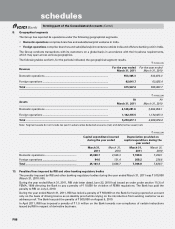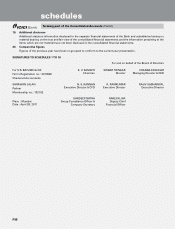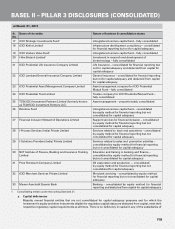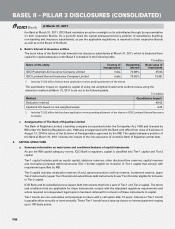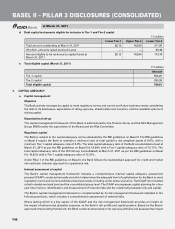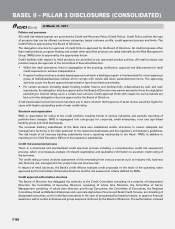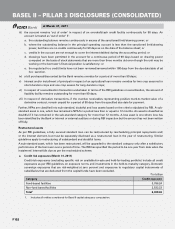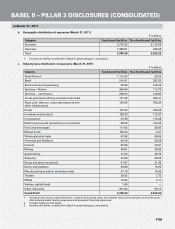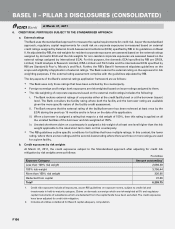ICICI Bank 2011 Annual Report Download - page 174
Download and view the complete annual report
Please find page 174 of the 2011 ICICI Bank annual report below. You can navigate through the pages in the report by either clicking on the pages listed below, or by using the keyword search tool below to find specific information within the annual report.
F96
d. Debt capital instruments eligible for inclusion in Tier-1 and Tier-2 capital
` in billion
Lower Tier-1 Upper Tier-2 Lower Tier-2
Total amount outstanding at March 31, 2011 28.12 142.04 211.87
Of which, amounts raised during the year — — 66.48
Amount eligible to be reckoned as capital funds at
March 31, 2011
28.12 142.04 173.79
e. Total eligible capital (March 31, 2011)
` in billion
Amount
Tier-1 capital 504.25
Tier-2 capital 285.38
Total eligible capital 789.63
3. CAPITAL ADEQUACY
a. Capital management
Objective
The Bank actively manages its capital to meet regulatory norms and current and future business needs considering
the risks in its businesses, expectation of rating agencies, shareholders and investors, and the available options of
raising capital.
Organisational set-up
The capital management framework of the Bank is administered by the Finance Group and the Risk Management
Group (RMG) under the supervision of the Board and the Risk Committee.
Regulatory capital
The Bank is subject to the capital adequacy norms stipulated by the RBI guidelines on Basel II. The RBI guidelines
on Basel II require the Bank to maintain a minimum ratio of total capital to risk weighted assets of 9.0%, with a
minimum Tier-1 capital adequacy ratio of 6.0%. The total capital adequacy ratio of the Bank at a standalone level at
March 31, 2011 as per the RBI guidelines on Basel II is 19.54% with a Tier-1 capital adequacy ratio of 13.17%. The
total capital adequacy ratio of the ICICI Group (consolidated) at March 31, 2011 as per the RBI guidelines on Basel
II is 19.92% with a Tier-1 capital adequacy ratio of 12.72%.
Under Pillar 1 of the RBI guidelines on Basel II, the Bank follows the standardised approach for credit and market
risk and basic indicator approach for operational risk.
Internal assessment of capital
The Bank’s capital management framework includes a comprehensive internal capital adequacy assessment
process (ICAAP) conducted annually and which determines the adequate level of capitalisation for the Bank to meet
regulatory norms and current and future business needs, including under stress scenarios. The ICAAP is formulated
at both standalone bank level and the consolidated group level. The ICAAP encompasses capital planning for a four
year time horizon, identification and measurement of material risks and the relationship between risk and capital.
The Bank’s capital management framework is complemented by its risk management framework (detailed in the
following sections), which includes a comprehensive assessment of material risks.
Stress testing which is a key aspect of the ICAAP and the risk management framework provides an insight on
the impact of extreme but plausible scenarios on the Bank’s risk profile and capital position. Based on the Board-
approved stress testing framework, the Bank conducts stress tests on its various portfolios and assesses the impact
BASEL II – PILLAR 3 DISCLOSURES (CONSOLIDATED)
at March 31, 2011




